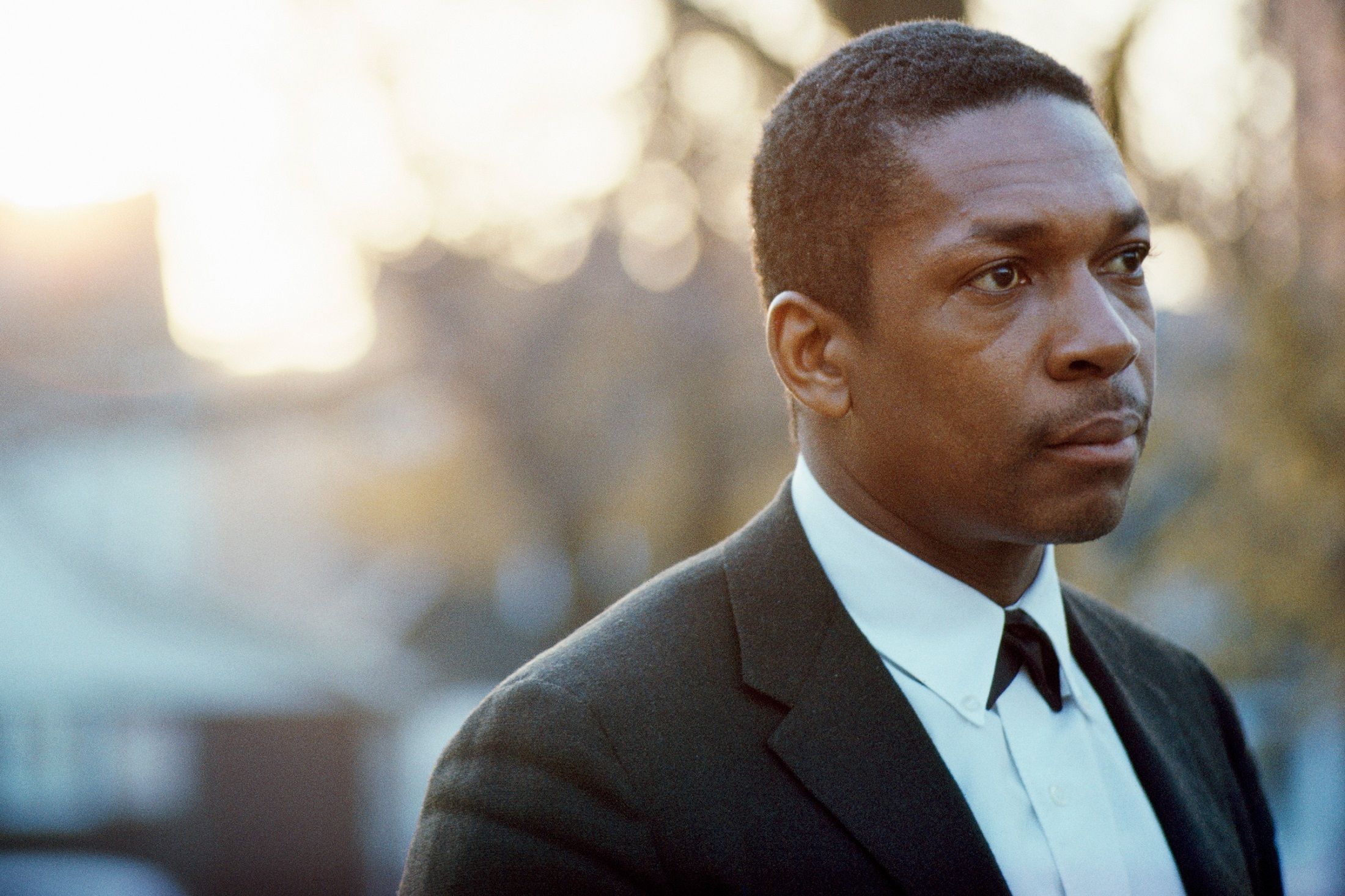John Coltrane’s “new” album is really just a commercial gimmick
by Seamus McAvoy
2019-10-09

John Coltrane
Blue World
Impulse! Records · September 27, 2019

John Coltrane? In 2019?
That’s right, folks. We’ll get to the music, but first, we have to go back to the summer of 1964.
Sure, The Beatles had already landed and were on their way to altering the course of rock history, but changes were coming for the jazz world as well. By now, the inimitable John Coltrane was well into his time at Impulse! Records after breaking off from a fearsome foursome spearheaded by Miles Davis. His “classic quartet” (comprised of Jimmy Garrison on bass, Elvin Jones on drums, and McCoy Tyner on piano) had just finished recording Crescent, and were about to begin studio sessions for Coltrane’s opus, the legendary A Love Supreme.
Meanwhile, French filmmaker Jean-Luc Godard had just released Le Mépris (Contempt),” his latest installment in a filmography that shaped the next decade (or more) of cinema. The “French New Wave,” led by filmmakers like Godard, Françoise Truffaut and Agnés Varda, was becoming an artistic response to the brewing social revolution soon to erupt on both sides of the Atlantic.
These two worlds collided when Coltrane was approached by Gilles Groulx, a Montreal-born documentary filmmaker, to record the soundtrack to his feature film debut. The result was a day-long session that became Blue World, which compiles eight recently uncovered studio takes that clocks in at 36 minutes.
By 1964, Groulx had demonstrated a particular interest in different aspects of Quebec society. The socio-political history of Quebec is long and complicated, but we can at least study the version that Groulx would have known: Maurice Duplessis had come into power following WWII, and oversaw a conservative government that maintained the backing of the Catholic-Church. A number of other prominent politicians, including Pierre Trudeau, eventually formed a liberal coalition in opposition, and by the late 1950s Quebec was experiencing a sort of societal upheaval similar to that which would take place in the U.S. and France in the 1960s.
Groulx was making plans to direct his first feature film around this time, which he called Le Chat Dans Le Sac (The Cat In The Bag). The Godard/New Wave influence is obvious in the film, which is shot using a handheld camera, instead of a typical steady mount, like the documentaries of Groulx’s past. The emerging style gave the politically interested Groulx the perfect framework to explore the social and political tensions of his modern Quebec. He didn’t have much of a budget, but he still needed a soundtrack.
The decision to approach Coltrane is a curious one, and his agreement even more so. Coltrane and his quartet were at the peak of their powers, delving deeper into an avant-garde style of post-bop jazz that was less interested in standard melody than they were in elaborate and spacious solos, and Groulx was asking for a much more conventional sound for his moody portrait of Montreal society. Coltrane dug up four of his own compositions and one jazz standard, “Out of This World” (renamed “Blue World”), all of which the quartet had long since done away with playing live. It would be like if Taylor Swift agreed to record a handful of country songs for a low-budget indie film that even A24 wasn’t aware of.
Blue World begins with a version of “Naima,” a ballad written by Coltrane dedicated to and named after his ex-wife which first appeared on the explosive Giant Steps (1960). The mixing on the opener differs greatly from its counterpart recorded four years earlier — Coltrane’s saxophone is featured more centrally, the cavernous atmosphere of the original lost to a crispness that does a disservice to the nature of the composition, and the same can be said for the rest of the album. Both takes of “Naima” that appear on Blue World feel much more like swing than the version intended for Giant Steps, executed nicely by the bouncy effortlessness of Tyner and Jones on piano and drums. The resulting track becomes less a haunting ode to a former lover than a kind of fluffy ballad in a film about urbanite melancholy — which, by no coincidence, was exactly the point.
No doubt influenced by Godard’s 1960 film Á bout de souffle (Breathless)” in which Martial Solal’s jazz soundtrack mocks that of a typical noir-standard or schlocky 50s action film, Groulx utilized the subtle darkness of Coltrane’s compositions to complement the bleakness of his own artistic vision. Despite some tender moments, Le Chat Dans Le Sac possesses a disgruntled protagonist that appears neurotic and paranoid, and eventually abandons his relationship and city lifestyle altogether. Coltrane’s score in the film is both sarcastic and innocuous. The film gives a reason for these songs, otherwise nothing more than simply “listenable” jazz, a reason to exist.
But why does Blue World exist? The album is, almost surely, the least interesting collection of songs Coltrane and company recorded in the years leading up to A Love Supreme, and likely in the years after as well. It is also, and not paradoxically, extremely polished, technically masterful jazz music from a group at the apex of their creative output. Its most obvious utility seems to be a rare, brief glimpse into a soundtrack session that might mildly interest the most enthusiastic Coltrane fan, albeit for a film they likely haven’t heard of. Beyond that, there’s virtually nothing about the music worth examining in great detail. Though perhaps a pessimistic take, is more likely that Blue World exists primarily because of the commercial success of Both Directions at Once (a recently discovered album released last year), and Impulse! Records sought to replicate a respectable payday. One can understand, then, why a reviewer might spend so much time on the circumstances that brought about the original recordings instead.
